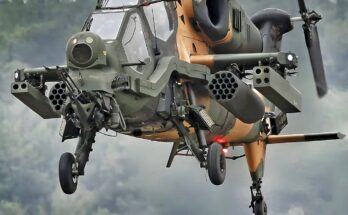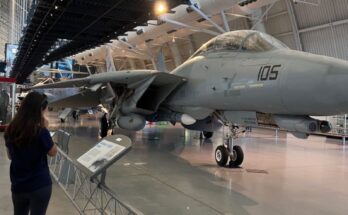
US Marines Board Massive CH-53 King Stallion for Tactical Mission
The roar of rotor blades fills the air as United States Marines march across the tarmac, their gear strapped tight and weapons slung across their chests. Ahead of them looms the CH-53K King Stallion, the Marine Corps’ largest and most powerful helicopter. Its sheer size and presence dominate the airfield, a reminder of the vital role it plays in modern tactical operations. Today, these Marines are preparing to board the aircraft for a critical mission that demonstrates the evolving capabilities of the Corps and the aircraft that supports them.
The CH-53K King Stallion is the latest heavy-lift helicopter in the Marine Corps arsenal, designed to replace the aging CH-53E Super Stallion. Capable of lifting an astounding 27,000 pounds, the King Stallion is built to transport troops, vehicles, supplies, and even other aircraft components into challenging environments. Its enhanced engines, advanced avionics, and digital flight controls make it not only more powerful but also safer and easier to operate. For Marines preparing for a mission, this helicopter represents reliability and strength in the most demanding conditions.
As the Marines climb aboard, their mission profile becomes clear: rapid deployment into a simulated hostile zone. The tactical exercise requires them to insert quickly, establish a perimeter, and secure an objective—all within a compressed timeframe. The King Stallion allows them to move as a cohesive unit, carrying not just personnel but also critical equipment needed for success. Inside, the spacious cabin echoes with the sounds of gear clinking against steel as Marines settle in for the ride.
The tactical importance of the King Stallion lies not only in its carrying capacity but also in its ability to operate in austere environments. Whether it is the rugged terrain of mountainous regions, dense jungles, or coastal landing zones, the aircraft gives the Marine Corps unmatched logistical reach. Its ability to deliver Marines and supplies directly to the front lines ensures that units remain agile and responsive in dynamic combat situations.
During the flight, the aircraft’s advanced systems reduce pilot workload and increase situational awareness. Modern digital cockpits provide real-time data, enhancing the ability to navigate complex airspace and respond to threats. Meanwhile, the Marines inside remain focused, rehearsing their objectives and running through last-minute checks. For them, the King Stallion is not just transportation—it is the bridge between preparation and action.
As the helicopter approaches the landing zone, dust and debris whip through the air in the downwash of its massive rotors. The rear ramp lowers, and within moments, the Marines surge into the field, weapons ready, moving with precision and discipline. The King Stallion lifts away, its mission far from over, as it prepares for the next insertion or resupply run.
This scene captures more than just a tactical drill; it highlights the ongoing modernization of the Marine Corps. The CH-53K King Stallion represents a leap forward in heavy-lift capability, ensuring that Marines can respond rapidly to crises around the world. Whether in combat, humanitarian assistance, or disaster relief, the King Stallion serves as a critical lifeline.
For the Marines who board it, the aircraft symbolizes both power and trust. On every mission, they know the King Stallion will deliver them where they need to be—ready to fight, ready to serve, and ready to win.


